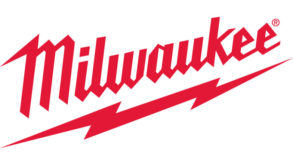This article was contributed by Milwaukee Tool as part of the BuiltWorlds Verified Contributor Program.
 Safety Considerations for Tool Cleaning
Safety Considerations for Tool Cleaning
COVID-19 poses a great health risk, especially to construction workers on the front lines. It’s crucial that your team in the field follows the CDC’s sanitation guidelines to both keep themselves safe and help slow the spread of coronavirus.
- When handling tools, you should wash your hands or use proper hand sanitizer before and after to prevent contamination.
- Anyone handling tools should be properly trained and protected using Personal Protective Equipment (PPE).
- Tools should be cleaned with mild soap, a clean damp cloth, and, as needed, an approved diluted bleach solution only.
- Cleaners that have conductive or corrosive materials, especially those with ammonia, should not be used. Some household detergents contain ammonia, for example, so you should read the ingredients carefully. Other examples of conductive or corrosive materials to avoid include: gasoline, turpentine, lacquer thinner, paint thinner, and chlorinated cleaning solutions.
Click here to see Milwaukee Tool’s full list of tips and safety considerations for cleaning tools.
In addition to sanitizing tools and equipment before they are used on the jobsite, it’s important to take additional precautions and sanitize them before they are transferred and received on different jobsites.
Safety Considerations for Tool Transfer
If you’re transferring power tools from one person to another, the following protocol is an example of possible measures to safely transfer your tools, which includes a transfer and a cleaning process. It’s important that you always practice proper hygiene during and after handling of tools. If you’re transferring a battery pack and battery cells that will be used by a team member, they should sit for 72 hours before being handled.
- Create a neutral pickup and drop-off area designated for tool transfers. This designated space should be a low-traffic but also secure area that won’t be susceptible to theft. Make sure to sign the tool in or out with the time/date it arrived or was transferred. You can use the One-Key app to keep track of your tool transfers.
- As should be common practice by now, make sure to avoid touching your face and immediately wash your hands before doing anything else.
- Once the tool has been successfully transferred from the crib or jobsite to its new destination, make sure to notify the site manager.
- Based on how the tool was stored, you should let the equipment sit for a set period of time, as indicated below:
- If the tool was stored in a cardboard box that had not been open, 24 hours; or
- If the tool was not stored in sealed a container and the tool is made of metal or plastic, or a combination of the two, 72 hours.
-
- Note: This can be a big departure from the common “Just-In-Time” inventory practice that logistics teams are used to. Be sure to be working ahead with Project Managers and Foremen to leave adequate time for dropoffs and pickups.
-
- If the Tool is needed prior to the rest times referenced above, retrieve the tool and clean it before use, following the process set out in our cleaning procedures guide.
- Avoid touching your face and immediately wash your hands before doing anything else. Wash your hands often, but especially after handling tools or equipment that someone else may have handled.
- Once the tool is retrieved, follow the same cleaning and hygiene procedures mentioned above before again working with the tool.
Taking these extra precautions will keep you and your team safe and help slow the spread of coronavirus.
What to Do When Ceasing Operations May Be Necessary
Nobody likes having to close up shop. But in the face of coronavirus, it’s a necessary step in helping to keep ourselves healthy and safe. Here are a couple ideas of what you can do for your tools while sheltering-in-place may be necessary:
Take Care of Tool and Equipment Maintenance
If you’re quarantined at home and are fortunate enough to have tools with you, this is a great time to take care of some of your tool maintenance needs. Doing this is a necessary part in ensuring the health and longevity of your tools and equipment. Here are some ideas:
- Clean and lubricate internal and external components in accordance with their owner’s manuals and recommended care instructions
- Send equipment out for calibration or scheduled maintenance
- Replace worn out parts in accordance with their owner’s manual and care instructions
- Inspect for water damage
Additionally, you can find manufacturer-specific recommendations for tool maintenance and equipment management in your owner’s manual. You’ll also find the manufacturer-recommended service schedule here.
Note: One-Key automatically uploads your owner’s manual for Milwaukee tools when you add them to inventory by serial number. You can access a PDF document of your owner’s manual by navigating to “uploads” within the item’s details.
If you’re due for service, what better time than now to get this work done? This will make sure that your tools and equipment are in tip-top shape and performing to specification when sent to jobs once you’re back up and running. Make sure you uphold your warranty by sending them your tools and equipment to one of our approved Milwaukee service centers.
Secure Tools and Equipment Remotely
If you are an equipment manager that finds you’ve had to shut down operations, we recommend locking out your One-Key compatible tools. One-Key compatible tools are built standard with Milwaukee tool security features that can:
- Prevent tampering and discourage theft by making tools non-operational.
- Prevent potential hazards when equipment is left behind.
This article was contributed by Milwaukee Tool as part of the BuiltWorlds Verified Contributor Program.

Discussion
Be the first to leave a comment.
You must be a member of the BuiltWorlds community to join the discussion.